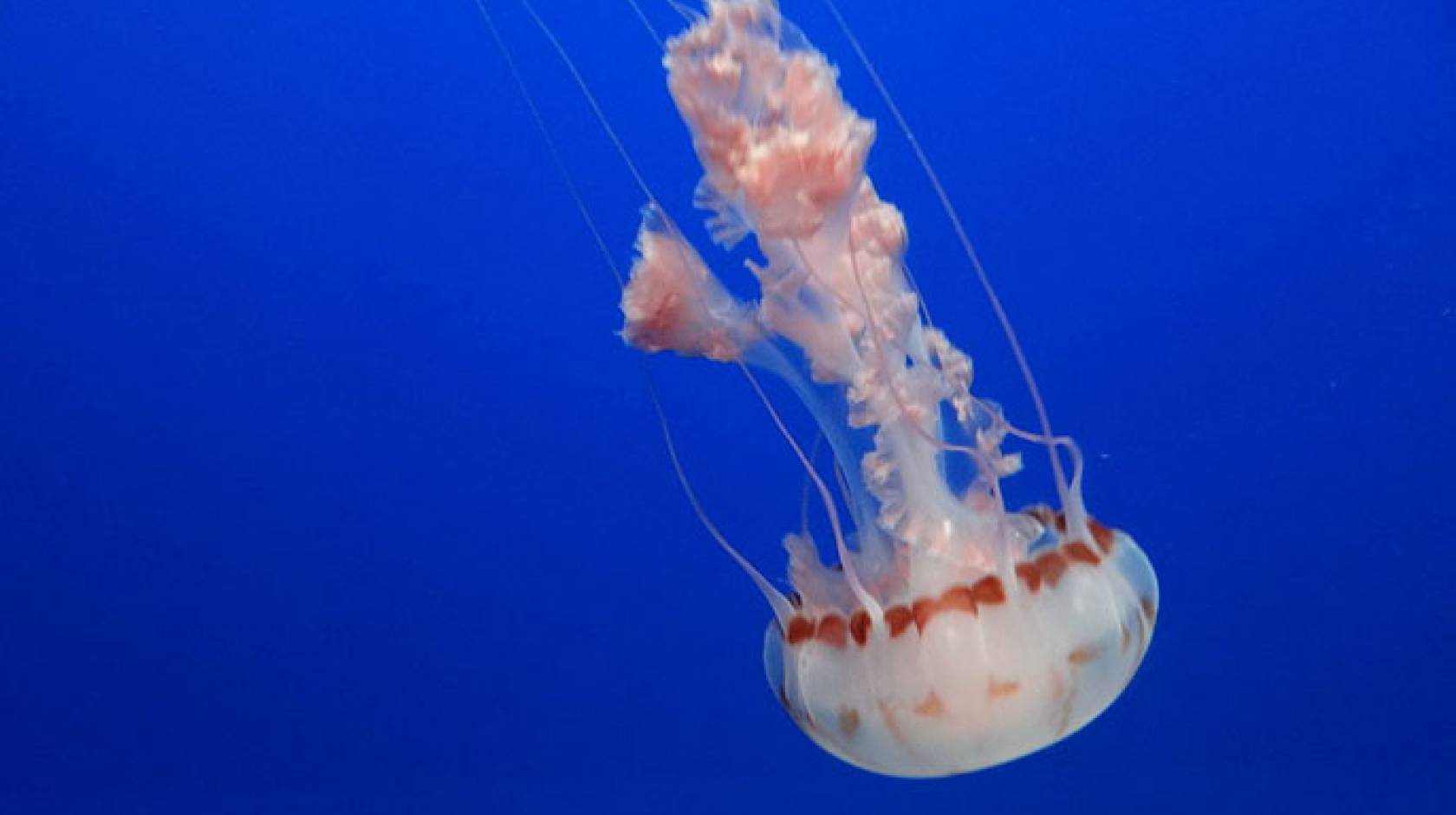Annie Reisewitz, UC San Diego

New research finds there is a distinct sound coming from a massive community of fish, shrimp, jellies, and squid as they travel up and down from the depths of the ocean to the water’s surface to feed. This sound could be serving as a “dinner bell” for these deep-water organisms that play a key role in ocean food webs and the global carbon cycle, and could help scientists better understand this mysterious ecosystem, according to new research presented this week at the 2016 Ocean Science Meeting in New Orleans.
A vast number of animals, including fish, shrimp, and squid, live in the ocean’s mesopelagic zone — the waters 200 to 1,000 meters (660 to 3,300 feet) below the surface. Taken together, these organisms weigh approximately 10 billion tons and are a major link in the food chain between microscopic plankton and top predators like tuna, birds, and marine mammals, according to Simone Baumann-Pickering, an assistant research biologist at Scripps Institution of Oceanography at UC San Diego. Because of their combined mass, these animals also play a major role in the global cycling of carbon from the atmosphere to the seafloor, she added.

Credit: UC San Diego
The ocean’s mesopelagic zone is a dark world: very little light filters down to these depths and without sunlight, food is less abundant. At dusk, many of these deep-water animals migrate up to the nutrient-abundant surface waters to feed, relying on the darkness to protect them from predators. At dawn, they sink back down to the dark mesopelagic zone for protection.
Now, Baumann-Pickering and her colleagues have found that there is a distinct sound associated with these daily journeys upwards and downwards. The team used sensitive acoustic instruments to record the low-frequency hum the animals emit as they move up to the surface to feed at dusk, and back down to deeper waters at dawn. The researchers aren’t yet certain which animals in the mesopelagic zone are creating the sound, but small bony fish that are abundant in the zone are the most likely suspects, Baumann-Pickering said.
The communal sound is three to six decibels louder than the background noise of the ocean, making it difficult for the human ear to distinguish, but it could provide scientists with a new way to study these organisms and give new insights into this ecosystem, she said.
Sounds could change scientists' understanding of ecosystem
“It’s not that loud. It sounds like a buzzing or humming, and that goes on for an hour to two hours, depending on the day,” said Baumann-Pickering, who will presented the new research during a presentation, titled “Do Top Predators cue on Sound Production by Mesopelagic Prey?” on Feb. 22.
It is well known that dolphins, whales, and other marine mammals use sound to communicate underwater, but acoustic communication among smaller animals, like those living in the mesopelagic area, is more difficult to hear and hasn’t been well studied by scientists.
The sound could be a signal for the mesopelagic zone organisms to start migrating up to the surface or back down to the darker depths of the ocean, Baumann-Pickering said. If mesopelagic animals convey information through sound, learning more about who is communicating and what they’re communicating about could change scientists’ understanding of how the ecosystem fits together. Using acoustics to monitor these organisms could also help scientists study how these animals could be affected by climate change, and the consequences of potential commercial fishing projects, she said.
The new research may also give scientists insight into predators who feed on the animals that live in the mesopelagic zone. The sound the organisms emit is likely only detectable a few hundred meters to a few kilometers away, but that may be enough to signal predators listening nearby that their prey is on the move.
Baumann-Pickering said the new research supports the idea that many ocean-dwelling animals could be communicating by listening to and responding to environmental sounds. Learning more about how marine animals communicate could shed light on these mysterious environments.
“I think a large array of (marine) animals will show in the next 10 to 20 years that they are capable of producing and receiving sounds,” Baumann-Pickering said.

